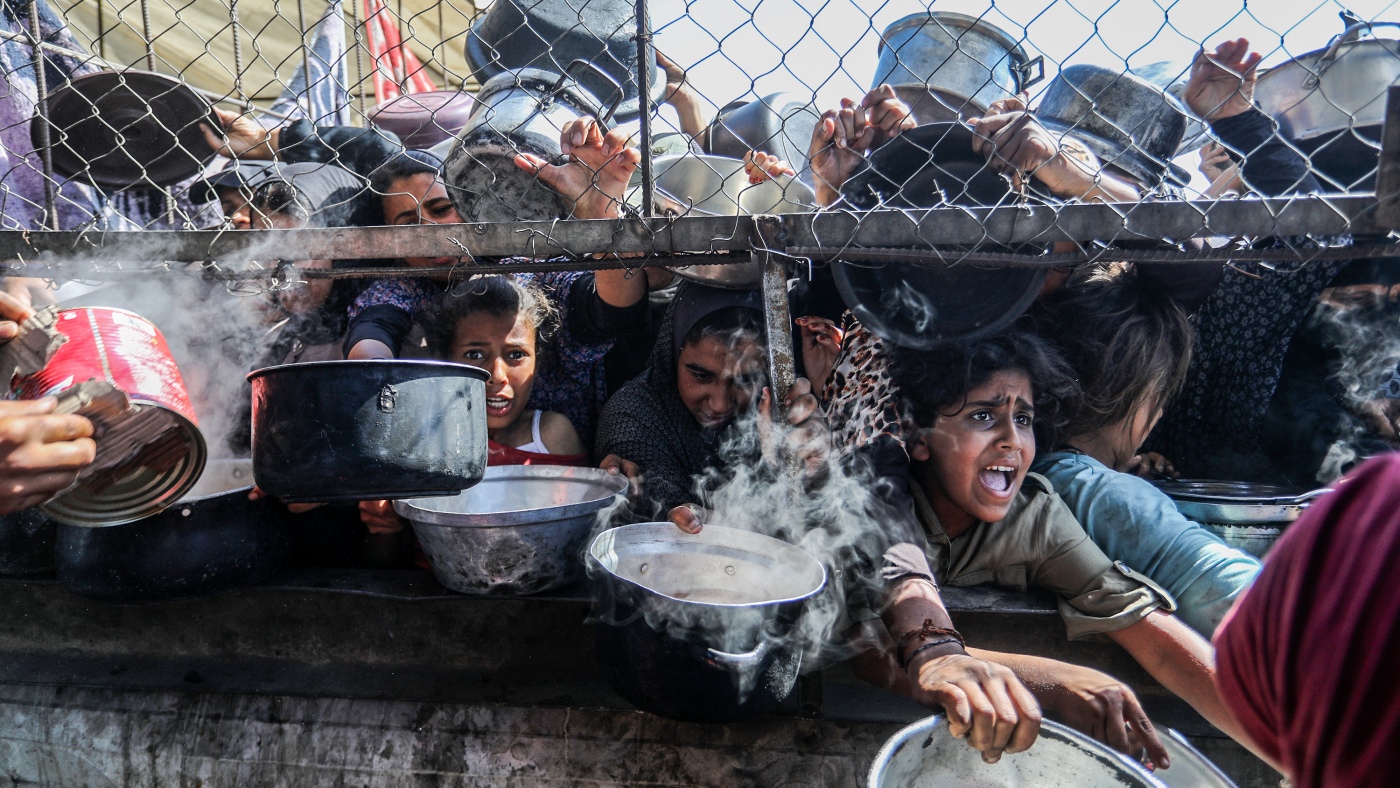Understanding the Humanitarian Food Crisis in Gaza: An In-Depth Analysis
The persistent humanitarian crisis in Gaza, especially concerning food aid, is a poignant example of how conflict and political restrictions intersect to deepen human suffering. The situation in Gaza, where an estimated 2.3 million Palestinians reside, is characterized by a critical scarcity of food supplies aggravated by geopolitical constraints that stall aid delivery. Beneath the surface of international goodwill and amassed resources lies a tangled web of bureaucracy and blockade, turning stored aid into wasted potential and leaving a population on the brink of famine.
—
The Paradox of Aid Accumulation and Decay Outside Gaza
The first distressing reality emerges in Jordan, a key logistics hub for aid intended for Gaza. Here, warehouses stocked with essential commodities such as flour, baby food, and medical supplies sit largely unused. These supplies, sufficient to sustain hundreds of thousands for a month, face an immovable bottleneck due to rigid restrictions imposed by Israeli authorities. Specifically, the limitation that only goods originating from Israel can enter Gaza drastically narrows the spectrum of usable aid. This narrow criterion excludes a vast array of international donations sourced elsewhere, forcing much of the accumulated aid to spoil before reaching those in desperate need.
This paradox—where plenty exists moments away, but scarcity persists inside the enclave—exemplifies the perverse logistics of conflict zones. The political filters effectively transform humanitarian corridors into sieves, preventing adequate nourishment from reaching vulnerable populations.
—
The Weight of Israeli Restrictions on Food and Aid Flow
The intensified blockade since October 2023 has transformed Gaza into an isolated enclave. The Israeli-imposed siege, bolstered by stringent customs rules scaling down deliveries, cripple the inflow of food aid. According to humanitarian organizations like the Norwegian Refugee Council and Oxfam, a staggering 83% of food aid shipments destined for Gaza are delayed or denied entry.
These restrictions ripple through Gaza’s fragile ecosystem: diminished food imports spike local prices, bakeries shutter, and ordinary families confront worsening food insecurity. The compounded effect extends beyond immediate hunger. Electricity shortages undermine refrigeration and clean water supply, aggravating malnutrition and leaving especially children vulnerable to fatal health outcomes. The tragic reality of malnutrition-linked child deaths marks a humanitarian toll that transcends statistics and reveals the human cost of political impasses.
—
Ground-Level Impact: Distribution Challenges and Social Unrest
When aid does manage to enter Gaza, it encounters another hurdle—distribution under extreme social stress. Reports of frantic crowds attempting to access limited food supplies at UN warehouses paint a picture of desperation. These scenes, occasionally erupting into violence, expose the immense strain on social cohesion and the difficulties of ensuring equitable distribution amid scarcity and fear.
Even temporary relief—such as a brief influx of approximately 90 truckloads after a prolonged blockade—does not erase the entrenched problem. With warehouses inside Gaza largely empty most of the time, the gap between what is available outside and what reaches everyday citizens underscores systemic failures. Political and logistical hurdles combine to prevent aid channels from functioning as lifelines, making the relief effort fragmented and insufficient.
—
The Complicating Role of International Funding Cuts
The crisis is further complicated by falling international aid budgets. Notably, cuts in US funding have created ripple effects throughout global stockpiles, limiting the ability of humanitarian organizations to replenish supplies and adapt to border constraints effectively. Reduced funds translate directly to less procurement capacity and narrower operational reach, leaving fewer resources to navigate increasingly hostile logistical environments.
Humanitarian organizations continue to advocate for increased funding and political pressure on governments to ease restrictions and establish ceasefires. Nonetheless, persisting military and political tensions blunt these calls, trapping Gaza’s population in a precarious limbo of dwindling aid and growing need.
—
Ethical and Humanitarian Dimensions: The Question of Engineered Famine
There is a grave ethical dimension to the food crisis in Gaza. Some UN specialists and human rights advocates argue that the blockade’s design amounts to a weaponization of starvation, creating conditions that verge on “manufactured famine.” By restricting food, medicines, and fuel, the siege weakens Gaza’s capacity for survival and recovery, particularly in its most vulnerable demographics.
Sustained conflict stretching over 19 months, accompanied by displacement and supply cut-offs, elevates the risk of famine from a looming possibility to an imminent catastrophe. This situation provokes profound questions about the use of food access as a strategic tool in warfare and the responsibilities of involved actors under international humanitarian norms.
—
Conclusion: Breaking the Cycle of Suffering
The crisis in Gaza illustrates a tragic breakdown in humanitarian access where political and military barriers undermine aid effectiveness, turning goodwill and resources into wasted potential. As food stocks rot outside while millions inside face starvation, the urgent need for coordinated international intervention becomes undeniable.
Removing arbitrary restrictions, ensuring reliable supply routes, and preserving funding for humanitarian operations are indispensable steps toward alleviating this crisis. Without decisive action, the encroaching famine will deepen, etching a distressing chapter defined by avoidable human suffering. The stark contrast between abundant but inaccessible aid and desperate hunger within Gaza calls for not just recognition but immediate, concerted efforts to transform aid from stalled shipments into saving grace.











